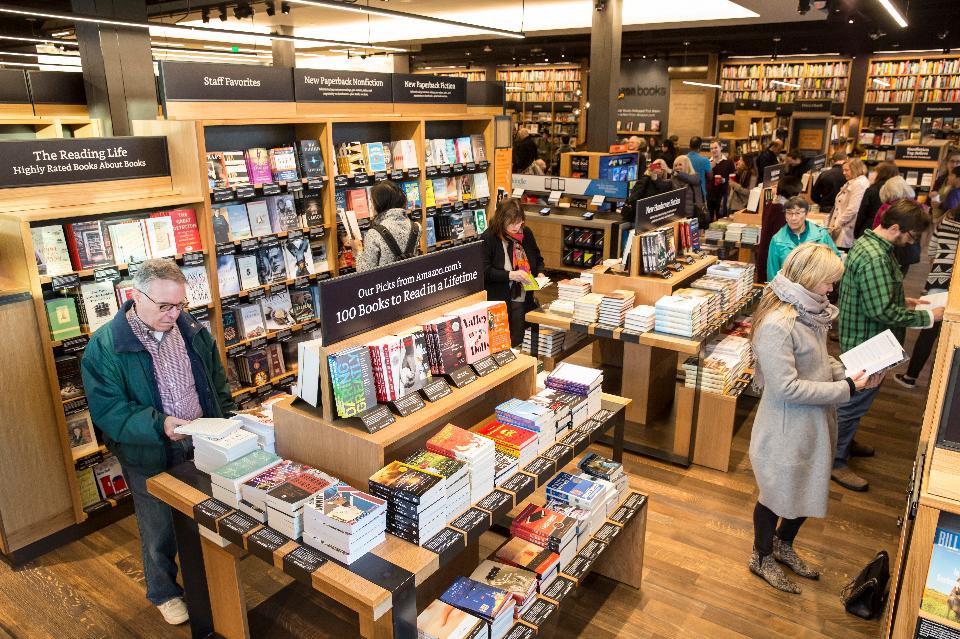Article
How Customer Engagement Shapes Amazon’s Newest Bookstore, Pumps Up Starbucks’ Sales, and Increases Subscriptions at The Times
May 10, 2017

We continue to see customer engagement being used as a powerful tool for growth. This week we look at how Amazon, Starbucks, and the U.K.’s The Times leverage customer interactions through a diversity of channels, including brick and mortar, mobile, and online, to engage in new ways and boost sales and subscriptions.
How Online Customers Drive Amazon’s Brick-and-Mortar Stores
In March, Amazon opened its fifth brick-and-mortar bookstore, and the first not located in a shopping mall. The new store leverages the millions of customer reviews and Amazon’s collaborative filtering algorithms to shape its selections. All books in the store have ratings on Amazon of 4.5 stars or more, reports Business Insider, unless they’re brand new or already bestsellers.
The store’s layout makes the data-driven framework transparent to customers. For example, the point-of-sale “New Hardcover Fiction” display sign includes a sub-head that says, “Selected using customer ratings, pre-orders, sales, and popularity on GoodReads.”
With this approach, Amazon hopes to change how consumers interact with a physical bookstore, and create a venue for them to engage with its brand. Unlike other bookstores, Amazon wins whether a customer buys a physical book in the store or uses the store to find a good read and then buys it online.
The key to this experiment, of course, is the massive amount of customer engagement data collected since Amazon began selling books 20 years ago, showing that this data is important not only for current growth but also for future opportunities.
As Mobile Ordering Bumps Engagement and Sales, Starbucks Pursues Your Car as a New Channel
The Mobile Order & Pay app continues to be a winner for Starbucks. At its recent shareholder meeting, the company said spending by reward members had increased 20% year-over-year. It attributes those numbers to both membership growth and personalization.
As part of its efforts to build customer engagement, the company has been testing personalized offers by delivering them directly to the opening screen of its app, says Chain Store Age. One result: Higher spend per reward member.
While Starbucks adjusts store operations and designs to meet mobile order demand, it has announced plans to open a new sales channel: automobiles. By mid-year, caffeine addicts will be able to order their double lattes from cars equipped with Ford’s Sync 3 infotainment system. To watch: Whether engaged customers will opt for this channel as quickly as they did mobile ordering.
How UK’s The Times Shifted Its Cadence to Increase Subscriptions
Newspapers may run on the news cycle, but reader engagement does not. The UK’s The Times uncovered this truth after changing the timing of its digital edition. The paper previously sent out a new digital edition when it had breaking news to report. Now, the paper goes out at 9 a.m., 12 p.m. and 5 p.m. One year after the change, subscriptions have grown 200%, and subscriber churn has decreased 4%.
A key benefit of the change is that it creates three preset “appointments” for the marketing team to interact with subscribers and registered readers, says Catherine Newman, chief marketing officer at The Times and Sunday Times, speaking with DigiDay. Working with the editorial team, marketers leverage content to keep subscribers engaged and convert registered users, who have limited access, into subscribers.
The Times results show that timing can positively impact reader engagement. Another option, perhaps for those considering fewer editions, is personalized send time. This ensures your emails are sent when an individual is most likely to open, helping increase engagement and, over time, revenue.
The State of Brand Loyalty in the U.S. in 2023
Related



